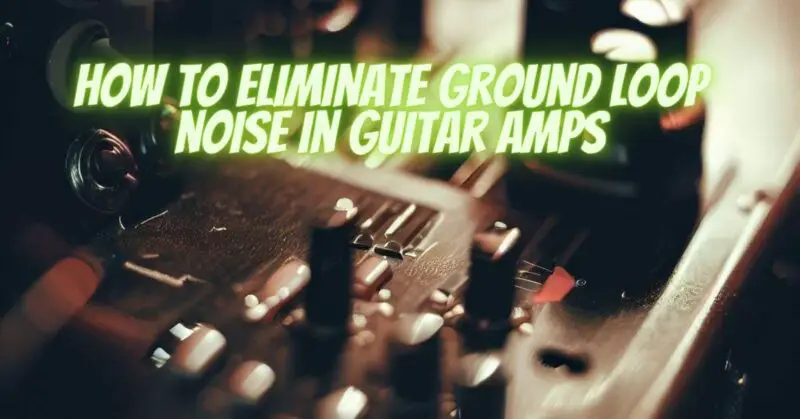Ground loop noise is a common issue that guitarists encounter when using multiple audio devices in their setup. It manifests as a low-frequency hum or buzzing sound, which can be both frustrating and distracting. Ground loop noise occurs when there are multiple grounding points in the audio chain, causing a difference in ground potential between connected devices. However, there are effective solutions to eliminate ground loop noise and achieve a clean and noise-free sound. In this article, we will explore how to identify ground loop noise and various methods to eliminate it in your guitar amp setup.
Identifying Ground Loop Noise
Ground loop noise can be characterized by a persistent low-frequency hum or buzz that is audible even when the guitar is not being played. It often intensifies when additional devices, such as pedals or recording equipment, are connected to the setup. To verify if ground loop noise is the cause of the issue, try the following steps:
- Disconnect all devices from your guitar amp and play your guitar directly into the amp. If the noise is eliminated, the problem is likely caused by ground loop interference.
- Reconnect each device one by one and listen for the hum. The hum will likely reappear when a particular device is connected, indicating a ground loop issue with that device.
Methods to Eliminate Ground Loop Noise
- Use a Ground Loop Isolator
A ground loop isolator is a simple and effective device designed to break the ground loop by providing a separate ground path for the connected devices. It is inserted between the problematic device and the guitar amp. Ground loop isolators are available in various forms, including DI boxes with ground lift switches and specialized audio adapters. They can be particularly useful for eliminating ground loop noise caused by devices like laptops, computers, or recording equipment.
- Implement Proper Grounding
Ensure that all devices in your setup are properly grounded. Use grounded power outlets and high-quality power cables to establish a reliable ground connection. Avoid using ungrounded power strips or extension cords, as they can contribute to ground loop noise.
- Use Isolated Power Supplies for Pedals
If you use multiple pedals in your setup, consider using isolated power supplies for them. Isolated power supplies provide separate power paths for each pedal, reducing the risk of ground loop noise caused by interconnected pedals.
- Reorganize Cable Routing
Keep your audio and power cables organized and separated from each other. Crossed or tightly bundled cables can act as antennas, picking up interference and exacerbating ground loop noise. Arrange the cables in a neat and orderly manner to minimize interference.
- Implement a Balanced Audio Chain
If possible, use balanced audio connections instead of unbalanced connections. Balanced connections are less susceptible to noise and interference and can help reduce ground loop issues.
Ground loop noise can be a frustrating and persistent problem in guitar amp setups. By identifying the issue and employing appropriate solutions, you can effectively eliminate ground loop noise and achieve a clean and noise-free sound in your guitar amp. Using a ground loop isolator, ensuring proper grounding, using isolated power supplies for pedals, reorganizing cable routing, and implementing balanced audio connections are all effective methods to silence the hum and buzz caused by ground loop interference. With these measures in place, you can focus on making music without the distraction of unwanted noise and enjoy a clear and pristine sound from your guitar amp setup.

